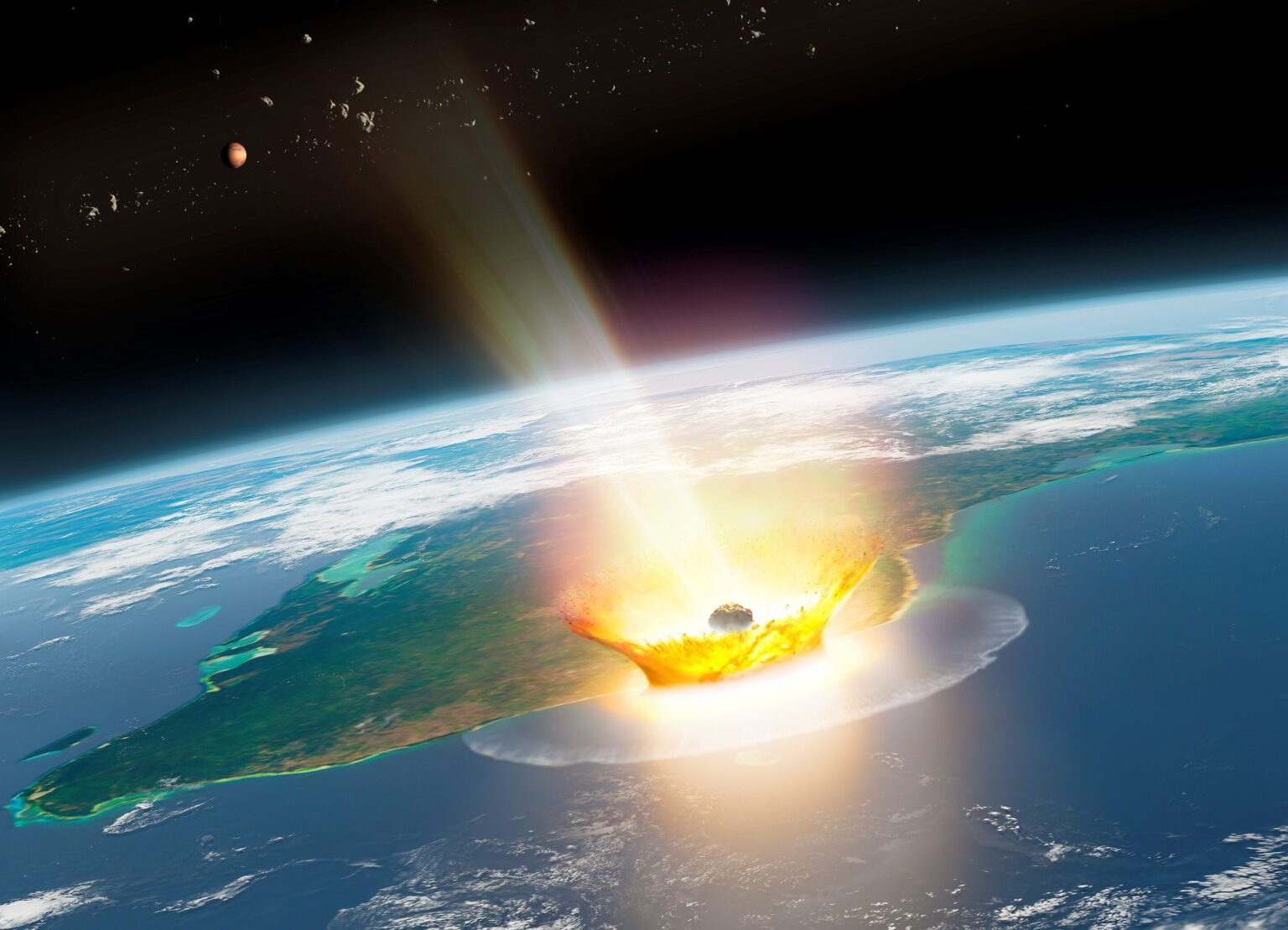Scientists have studied rocks near the huge Chicxulub crater on the Yucatan Peninsula. It is thought to have formed from a collision with an asteroid that killed the dinosaurs. New research suggested that it came from beyond the orbit of Jupiter.

Chicxulub Crater Survey
The Chicxulub crater on Mexico’s Yucatan Peninsula is thought to be the same place where a giant asteroid struck about 66 million years ago, ending the existence of dinosaurs on our planet. Scientists recently published a study that solved the mystery of where it came from.
The article published in the journal Science provides the result of the study of rocks inside the remains of the crater, more precisely the boundary layer that separates the Cretaceous sediments from the Paleogene and, as scientists believe, containing the remains of an asteroid body.
It was ruthenium isotopes that interested them. This chemical element is quite rare on Earth, but there is plenty of it in space. They rightly noticed that almost all of the ruthenium in the Chicxulub boundary layer must have gotten there with the asteroid. And according to the ratio of its isotopes, it is possible to determine where it was formed.
Asteroid from behind Jupiter
The two main classes of asteroids that are well distinguished by their content of different ruthenium isotopes are carbonaceous and silicate. The first ones predominantly form where the sun’s rays allow water and other volatile compounds not to vaporize, that is, along the orbit of Jupiter. The second ones are mostly formed closer to us.
And now a new study has come up with a completely unambiguous and somewhat sensational result. The dinosaur-killing asteroid was a carbonaceous asteroid that orbited Jupiter. It is not completely unexpected, as similar assumptions were made as far back as two decades ago. However, they had no certainty at the time.
But overall this is a rather unusual result, since most of the large bodies in contact with our planet are local silicates. At the same time, the researchers emphasized that the result did not mean that the asteroid before the destruction of the dinosaurs came to us directly from remote regions of the Solar System.
It may have migrated to the inner Solar System earlier and orbited the Sun for tens of millions of years before meeting Earth.
Water and asteroids
Scientists have determined that the asteroid destroying the dinosaurs contained a lot of water. However, they note that calling it a comet, as it was suggested a few years ago, is completely wrong. It is exactly a carbonaceous asteroid and its chemical composition is very different from what is found on comets.
And that leads scientists to an interesting hypothesis. Up until now, it was thought that it was comets that brought most of the water to our planet 4.5 billion years ago. However, it may now turn out that these weren’t space icebergs from around the Solar System, but specifically carbonaceous asteroids.
In order to verify all this, scientists propose to explore the sites of other major collisions of the past, in fact, there are many of them on Earth.
According to phys.org


